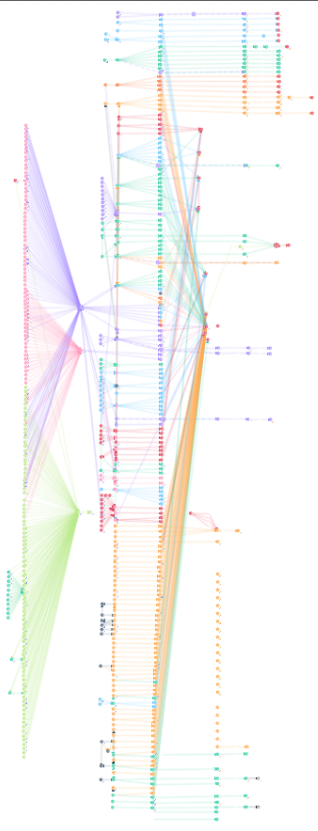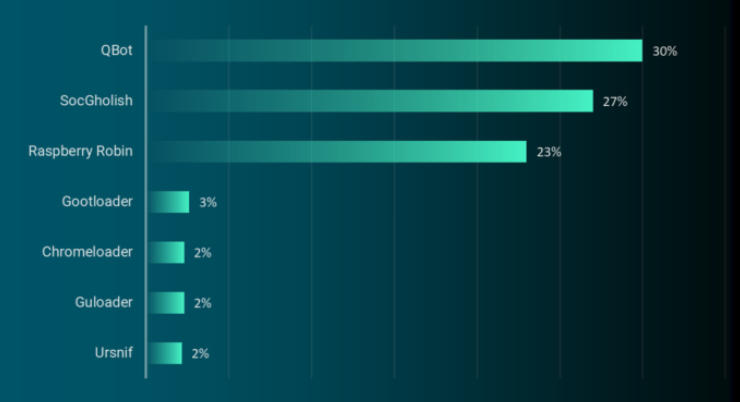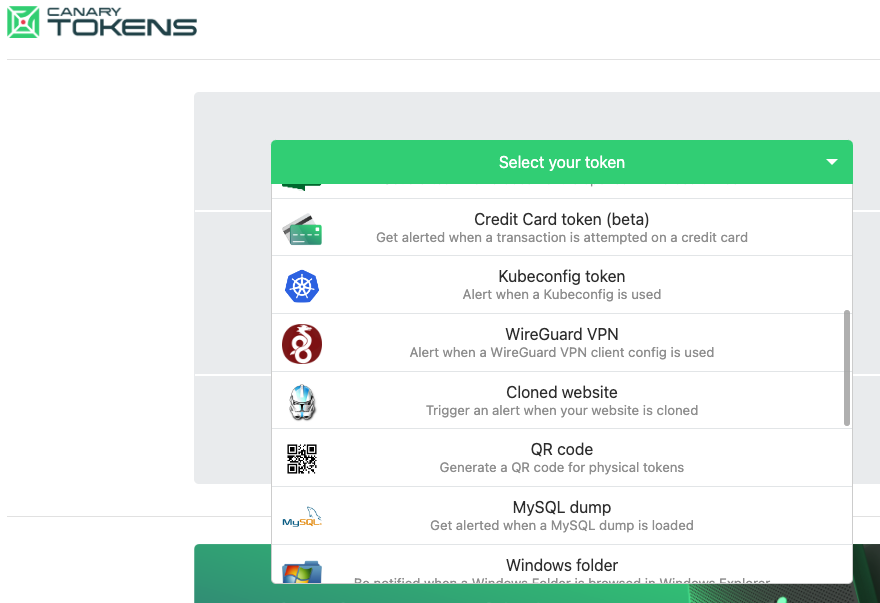In December 2022, KrebsOnSecurity broke the news that a cybercriminal using the handle “USDoD” had infiltrated the FBI‘s vetted information sharing network InfraGard, and was selling the contact information for all 80,000 members. The FBI responded by reverifying InfraGard members and by seizing the cybercrime forum where the data was being sold. But on Sept. 11, 2023, USDoD resurfaced after a lengthy absence to leak sensitive employee data stolen from the aerospace giant Airbus, while promising to visit the same treatment on top U.S. defense contractors.
In a post on the English language cybercrime forum BreachForums, USDoD leaked information on roughly 3,200 Airbus vendors, including names, addresses, phone numbers, and email addresses. USDoD claimed they grabbed the data by using passwords stolen from a Turkish airline employee who had third-party access to Airbus’ systems.
USDoD didn’t say why they decided to leak the data on the 22nd anniversary of the 9/11 attacks, but there was definitely an aircraft theme to the message that accompanied the leak, which concluded with the words, “Lockheed martin, Raytheon and the entire defense contractos [sic], I’m coming for you [expletive].”
Airbus has apparently confirmed the cybercriminal’s account to the threat intelligence firm Hudson Rock, which determined that the Airbus credentials were stolen after a Turkish airline employee infected their computer with a prevalent and powerful info-stealing trojan called RedLine.
Info-stealers like RedLine typically are deployed via opportunistic email malware campaigns, and by secretly bundling the trojans with cracked versions of popular software titles made available online. Credentials stolen by info-stealers often end up for sale on cybercrime shops that peddle purloined passwords and authentication cookies (these logs also often show up in the malware scanning service VirusTotal).
Hudson Rock said it recovered the log files created by a RedLine infection on the Turkish airline employee’s system, and found the employee likely infected their machine after downloading pirated and secretly backdoored software for Microsoft Windows.
Hudson Rock says info-stealer infections from RedLine and a host of similar trojans have surged in recent years, and that they remain “a primary initial attack vector used by threat actors to infiltrate organizations and execute cyberattacks, including ransomware, data breaches, account overtakes, and corporate espionage.”
The prevalence of RedLine and other info-stealers means that a great many consequential security breaches begin with cybercriminals abusing stolen employee credentials. In this scenario, the attacker temporarily assumes the identity and online privileges assigned to a hacked employee, and the onus is on the employer to tell the difference.
In addition to snarfing any passwords stored on or transmitted through an infected system, info-stealers also siphon authentication cookies or tokens that allow one to remain signed-in to online services for long periods of time without having to resupply one’s password and multi-factor authentication code. By stealing these tokens, attackers can often reuse them in their own web browser, and bypass any authentication normally required for that account.
Microsoft Corp. this week acknowledged that a China-backed hacking group was able to steal one of the keys to its email kingdom that granted near-unfettered access to U.S. government inboxes. Microsoft’s detailed post-mortem cum mea culpa explained that a secret signing key was stolen from an employee in an unlucky series of unfortunate events, and thanks to TechCrunch we now know that the culprit once again was “token-stealing malware” on the employee’s system.
In April 2023, the FBI seized Genesis Market, a bustling, fully automated cybercrime store that was continuously restocked with freshly hacked passwords and authentication tokens stolen by a network of contractors who deployed RedLine and other info-stealer malware.
In March 2023, the FBI arrested and charged the alleged administrator of BreachForums (aka Breached), the same cybercrime community where USDoD leaked the Airbus data. In June 2023, the FBI seized the BreachForums domain name, but the forum has since migrated to a new domain.
Unsolicited email continues to be a huge vector for info-stealing malware, but lately the crooks behind these schemes have been gaming the search engines so that their malicious sites impersonating popular software vendors actually appear before the legitimate vendor’s website. So take special care when downloading software to ensure that you are in fact getting the program from the original, legitimate source whenever possible.
Also, unless you really know what you’re doing, please don’t download and install pirated software. Sure, the cracked program might do exactly what you expect it to do, but the chances are good that it is also laced with something nasty. And when all of your passwords are stolen and your important accounts have been hijacked or sold, you will wish you had simply paid for the real thing.
Microsoft today issued software updates to fix at least five dozen security holes in Windows and supported software, including patches for two zero-day vulnerabilities that are already being exploited. Also, Adobe, Google Chrome and Apple iOS users may have their own zero-day patching to do.

On Sept. 7, researchers at Citizen Lab warned they were seeing active exploitation of a “zero-click,” zero-day flaw to install spyware on iOS devices without any interaction from the victim.
“The exploit chain was capable of compromising iPhones running the latest version of iOS (16.6) without any interaction from the victim,” the researchers wrote.
According to Citizen Lab, the exploit uses malicious images sent via iMessage, an embedded component of Apple’s iOS that has been the source of previous zero-click flaws in iPhones and iPads.
Apple says the iOS flaw (CVE-2023-41064) does not seem to work against devices that have its ultra-paranoid “Lockdown Mode” enabled. This feature restricts non-essential iOS features to reduce the device’s overall attack surface, and it was designed for users concerned that they may be subject to targeted attacks. Citizen Lab says the bug it discovered was being exploited to install spyware made by the Israeli cyber surveillance company NSO Group.
This vulnerability is fixed in iOS 16.6.1 and iPadOS 16.6.1. To turn on Lockdown Mode in iOS 16, go to Settings, then Privacy and Security, then Lockdown Mode.
Not to be left out of the zero-day fun, Google acknowledged on Sept. 11 that an exploit for a heap overflow bug in Chrome is being exploited in the wild. Google says it is releasing updates to fix the flaw, and that restarting Chrome is the way to apply any pending updates. Interestingly, Google says this bug was reported by Apple and Citizen Lab.
On the Microsoft front, a zero-day in Microsoft Word is among the more concerning bugs fixed today. Tracked as CVE-2023-36761, it is flagged as an “information disclosure” vulnerability. But that description hardly grasps at the sensitivity of the information potentially exposed here.
Tom Bowyer, manager of product security at Automox, said exploiting this vulnerability could lead to the disclosure of Net-NTLMv2 hashes, which are used for authentication in Windows environments.
“If a malicious actor gains access to these hashes, they can potentially impersonate the user, gaining unauthorized access to sensitive data and systems,” Bowyer said, noting that CVE-2023-36761 can be exploited just by viewing a malicious document in the Windows preview pane. “They could also conduct pass-the-hash attacks, where the attacker uses the hashed version of a password to authenticate themselves without needing to decrypt it.”
The other Windows zero-day fixed this month is CVE-2023-36802. This is an “elevation of privilege” flaw in the “Microsoft Streaming Service Proxy,” which is built into Windows 10, 11 and Windows Server versions. Microsoft says an attacker who successfully exploits the bug can gain SYSTEM level privileges on a Windows computer.
Five of the flaws Microsoft fixed this month earned its “critical” rating, which the software giant reserves for vulnerabilities that can be exploited by malware or malcontents with little or no interaction by Windows users.
According to the SANS Internet Storm Center, the most serious critical bug in September’s Patch Tuesday is CVE-2023-38148, which is a weakness in the Internet Connection Sharing service on Windows. Microsoft says an unauthenticated attacker could leverage the flaw to install malware just sending a specially crafted data packet to a vulnerable Windows system.
Finally, Adobe has released critical security updates for its Adobe Reader and Acrobat software that also fixes a zero-day vulnerability (CVE-2023-26369). More details are at Adobe’s advisory.
For a more granular breakdown of the Windows updates pushed out today, check out Microsoft Patch Tuesday by Morphus Labs. In the meantime, consider backing up your data before updating Windows, and keep an eye on AskWoody.com for reports of any widespread problems with any of the updates released as part of September’s Patch Tuesday.
Update: Mozilla also has fixed zero-day flaw in Firefox and Thunderbird, and the Brave browser was updated as well. It appears the common theme here is any software that uses a code library called “libwebp,” and that this vulnerability is being tracked as CVE-2023-4863.
“This includes Electron-based applications, for example – Signal,” writes StackDiary.com. “Electron patched the vulnerability yesterday. Also, software like Honeyview (from Bandisoft) released an update to fix the issue. CVE-2023-4863 was falsely marked as Chrome-only by Mitre and other organizations that track CVE’s and 100% of media reported this issue as “Chrome only”, when it’s not.”
In November 2022, the password manager service LastPass disclosed a breach in which hackers stole password vaults containing both encrypted and plaintext data for more than 25 million users. Since then, a steady trickle of six-figure cryptocurrency heists targeting security-conscious people throughout the tech industry has led some security experts to conclude that crooks likely have succeeded at cracking open some of the stolen LastPass vaults.
Taylor Monahan is lead product manager of MetaMask, a popular software cryptocurrency wallet used to interact with the Ethereum blockchain. Since late December 2022, Monahan and other researchers have identified a highly reliable set of clues that they say connect recent thefts targeting more than 150 people. Collectively, these individuals have been robbed of more than $35 million worth of crypto.
Monahan said virtually all of the victims she has assisted were longtime cryptocurrency investors, and security-minded individuals. Importantly, none appeared to have suffered the sorts of attacks that typically preface a high-dollar crypto heist, such as the compromise of one’s email and/or mobile phone accounts.
“The victim profile remains the most striking thing,” Monahan wrote. “They truly all are reasonably secure. They are also deeply integrated into this ecosystem, [including] employees of reputable crypto orgs, VCs [venture capitalists], people who built DeFi protocols, deploy contracts, run full nodes.”
Monahan has been documenting the crypto thefts via Twitter/X since March 2023, frequently expressing frustration in the search for a common cause among the victims. Then on Aug. 28, Monahan said she’d concluded that the common thread among nearly every victim was that they’d previously used LastPass to store their “seed phrase,” the private key needed to unlock access to their cryptocurrency investments.

MetaMask owner Taylor Monahan on Twitter. Image: twitter.com/tayvano_
Armed with your secret seed phrase, anyone can instantly access all of the cryptocurrency holdings tied to that cryptographic key, and move the funds to anywhere they like.
Which is why the best practice for many cybersecurity enthusiasts has long been to store their seed phrases either in some type of encrypted container — such as a password manager — or else inside an offline, special-purpose hardware encryption device, such as a Trezor or Ledger wallet.
“The seed phrase is literally the money,” said Nick Bax, director of analytics at Unciphered, a cryptocurrency wallet recovery company. “If you have my seed phrase, you can copy and paste that into your wallet, and then you can see all my accounts. And you can transfer my funds.”
Bax said he closely reviewed the massive trove of cryptocurrency theft data that Taylor Monahan and others have collected and linked together.
“It’s one of the broadest and most complex cryptocurrency investigations I’ve ever seen,” Bax said. “I ran my own analysis on top of their data and reached the same conclusion that Taylor reported. The threat actor moved stolen funds from multiple victims to the same blockchain addresses, making it possible to strongly link those victims.”
Bax, Monahan and others interviewed for this story say they’ve identified a unique signature that links the theft of more than $35 million in crypto from more than 150 confirmed victims, with roughly two to five high-dollar heists happening each month since December 2022.
KrebsOnSecurity has reviewed this signature but is not publishing it at the request of Monahan and other researchers, who say doing so could cause the attackers to alter their operations in ways that make their criminal activity more difficult to track.
But the researchers have published findings about the dramatic similarities in the ways that victim funds were stolen and laundered through specific cryptocurrency exchanges. They also learned the attackers frequently grouped together victims by sending their cryptocurrencies to the same destination crypto wallet.

A graphic published by @tayvano_ on Twitter depicting the movement of stolen cryptocurrencies from victims who used LastPass to store their crypto seed phrases.
By identifying points of overlap in these destination addresses, the researchers were then able to track down and interview new victims. For example, the researchers said their methodology identified a recent multi-million dollar crypto heist victim as an employee at Chainalysis, a blockchain analysis firm that works closely with law enforcement agencies to help track down cybercriminals and money launderers.
Chainalysis confirmed that the employee had suffered a high-dollar cryptocurrency heist late last month, but otherwise declined to comment for this story.
Bax said the only obvious commonality between the victims who agreed to be interviewed was that they had stored the seed phrases for their cryptocurrency wallets in LastPass.
“On top of the overlapping indicators of compromise, there are more circumstantial behavioral patterns and tradecraft which are also consistent between different thefts and support the conclusion,” Bax told KrebsOnSecuirty. “I’m confident enough that this is a real problem that I’ve been urging my friends and family who use LastPass to change all of their passwords and migrate any crypto that may have been exposed, despite knowing full well how tedious that is.”
LastPass declined to answer questions about the research highlighted in this story, citing an ongoing law enforcement investigation and pending litigation against the company in response to its 2022 data breach.
“Last year’s incident remains the subject of an ongoing investigation by law enforcement and is also the subject of pending litigation,” LastPass said in a written statement provided to KrebsOnSecurity. “Since last year’s attack on LastPass, we have remained in contact with law enforcement and continue to do so.”
Their statement continues:
“We have shared various technical information, Indicators of Compromise (IOCs), and threat actor tactics, techniques, and procedures (TTPs) with our law enforcement contacts as well as our internal and external threat intelligence and forensic partners in an effort to try and help identify the parties responsible. In the meantime, we encourage any security researchers to share any useful information they believe they may have with our Threat Intelligence team by contacting securitydisclosure@lastpass.com.”
On August 25, 2022, LastPass CEO Karim Toubba wrote to users that the company had detected unusual activity in its software development environment, and that the intruders stole some source code and proprietary LastPass technical information. On Sept. 15, 2022, LastPass said an investigation into the August breach determined the attacker did not access any customer data or password vaults.
But on Nov. 30, 2022, LastPass notified customers about another, far more serious security incident that the company said leveraged data stolen in the August breach. LastPass disclosed that criminal hackers had compromised encrypted copies of some password vaults, as well as other personal information.
In February 2023, LastPass disclosed that the intrusion involved a highly complex, targeted attack against a DevOps engineer who was one of only four LastPass employees with access to the corporate vault.
“This was accomplished by targeting the DevOps engineer’s home computer and exploiting a vulnerable third-party media software package, which enabled remote code execution capability and allowed the threat actor to implant keylogger malware,” LastPass officials wrote. “The threat actor was able to capture the employee’s master password as it was entered, after the employee authenticated with MFA, and gain access to the DevOps engineer’s LastPass corporate vault.”
Dan Goodin at Ars Technica reported and then confirmed that the attackers exploited a known vulnerability in a Plex media server that the employee was running on his home network, and succeeded in installing malicious software that stole passwords and other authentication credentials. The vulnerability exploited by the intruders was patched back in 2020, but the employee never updated his Plex software.
As it happens, Plex announced its own data breach one day before LastPass disclosed its initial August intrusion. On August 24, 2022, Plex’s security team urged users to reset their passwords, saying an intruder had accessed customer emails, usernames and encrypted passwords.
A basic functionality of LastPass is that it will pick and remember lengthy, complex passwords for each of your websites or online services. To automatically populate the appropriate credentials at any website going forward, you simply authenticate to LastPass using your master password.
LastPass has always emphasized that if you lose this master password, that’s too bad because they don’t store it and their encryption is so strong that even they can’t help you recover it.
But experts say all bets are off when cybercrooks can get their hands on the encrypted vault data itself — as opposed to having to interact with LastPass via its website. These so-called “offline” attacks allow the bad guys to conduct unlimited and unfettered “brute force” password cracking attempts against the encrypted data using powerful computers that can each try millions of password guesses per second.
“It does leave things vulnerable to brute force when the vaults are stolen en masse, especially if info about the vault HOLDER is available,” said Nicholas Weaver, a researcher at University of California, Berkeley’s International Computer Science Institute (ICSI) and lecturer at UC Davis. “So you just crunch and crunch and crunch with GPUs, with a priority list of vaults you target.”
How hard would it be for well-resourced criminals to crack the master passwords securing LastPass user vaults? Perhaps the best answer to this question comes from Wladimir Palant, a security researcher and the original developer behind the Adblock Plus browser plugin.
In a December 2022 blog post, Palant explained that the crackability of a LastPass master password depends largely on two things: The complexity of the master password, and the default settings for LastPass users, which appear to have varied quite a bit based on when those users began patronizing the service.
LastPass says that since 2018 it has required a twelve-character minimum for master passwords, which the company said “greatly minimizes the ability for successful brute force password guessing.”
But Palant said while LastPass indeed improved its master password defaults in 2018, it did not force all existing customers who had master passwords of lesser lengths to pick new credentials that would satisfy the 12-character minimum.
“If you are a LastPass customer, chances are that you are completely unaware of this requirement,” Palant wrote. “That’s because LastPass didn’t ask existing customers to change their master password. I had my test account since 2018, and even today I can log in with my eight-character password without any warnings or prompts to change it.”
Palant believes LastPass also failed to upgrade many older, original customers to more secure encryption protections that were offered to newer customers over the years. One important setting in LastPass is the number of “iterations,” or how many times your master password is run through the company’s encryption routines. The more iterations, the longer it takes an offline attacker to crack your master password.
Palant noted last year that for many older LastPass users, the initial default setting for iterations was anywhere from “1” to “500.” By 2013, new LastPass customers were given 5,000 iterations by default. In February 2018, LastPass changed the default to 100,100 iterations. And very recently, it upped that again to 600,000.
Palant said the 2018 change was in response to a security bug report he filed about some users having dangerously low iterations in their LastPass settings.
“Worse yet, for reasons that are beyond me, LastPass didn’t complete this migration,” Palant wrote. “My test account is still at 5,000 iterations, as are the accounts of many other users who checked their LastPass settings. LastPass would know how many users are affected, but they aren’t telling that. In fact, it’s painfully obvious that LastPass never bothered updating users’ security settings. Not when they changed the default from 1 to 500 iterations. Not when they changed it from 500 to 5,000. Only my persistence made them consider it for their latest change. And they still failed implementing it consistently.”
A chart on Palant’s blog post offers an idea of how increasing password iterations dramatically increases the costs and time needed by the attackers to crack someone’s master password. Palant said it would take a single GPU about a year to crack a password of average complexity with 500 iterations, and about 10 years to crack the same password run through 5,000 iterations.

Image: palant.info
However, these numbers radically come down when a determined adversary also has other large-scale computational assets at their disposal, such as a bitcoin mining operation that can coordinate the password-cracking activity across multiple powerful systems simultaneously.
Weaver said a password or passphrase with average complexity — such as “Correct Horse Battery Staple” is only secure against online attacks, and that its roughly 40 bits of randomness or “entropy” means a graphics card can blow through it in no time.
“An Nvidia 3090 can do roughly 4 million [password guesses] per second with 1000 iterations, but that would go down to 8 thousand per second with 500,000 iterations, which is why iteration count matters so much,” Weaver said. “So a combination of ‘not THAT strong of a password’ and ‘old vault’ and ‘low iteration count’ would make it theoretically crackable but real work, but the work is worth it given the targets.”
Reached by KrebsOnSecurity, Palant said he never received a response from LastPass about why the company apparently failed to migrate some number of customers to more secure account settings.
“I know exactly as much as everyone else,” Palant wrote in reply. “LastPass published some additional information in March. This finally answered the questions about the timeline of their breach – meaning which users are affected. It also made obvious that business customers are very much at risk here, Federated Login Services being highly compromised in this breach (LastPass downplaying as usual of course).”
Palant said upon logging into his LastPass account a few days ago, he found his master password was still set at 5,000 iterations.
KrebsOnSecurity interviewed one of the victims tracked down by Monahan, a software engineer and startup founder who recently was robbed of approximately $3.4 million worth of different cryptocurrencies. The victim agreed to tell his story in exchange for anonymity because he is still trying to claw back his losses. We’ll refer to him here as “Connor” (not his real name).
Connor said he began using LastPass roughly a decade ago, and that he also stored the seed phrase for his primary cryptocurrency wallet inside of LastPass. Connor chose to protect his LastPass password vault with an eight character master password that included numbers and symbols (~50 bits of entropy).
“I thought at the time that the bigger risk was losing a piece of paper with my seed phrase on it,” Connor said. “I had it in a bank security deposit box before that, but then I started thinking, ‘Hey, the bank might close or burn down and I could lose my seed phrase.'”
Those seed phrases sat in his LastPass vault for years. Then, early on the morning of Sunday, Aug. 27, 2023, Connor was awoken by a service he’d set up to monitor his cryptocurrency addresses for any unusual activity: Someone was draining funds from his accounts, and fast.
Like other victims interviewed for this story, Connor didn’t suffer the usual indignities that typically presage a cryptocurrency robbery, such as account takeovers of his email inbox or mobile phone number.
Connor said he doesn’t know the number of iterations his master password was given originally, or what it was set at when the LastPass user vault data was stolen last year. But he said he recently logged into his LastPass account and the system forced him to upgrade to the new 600,000 iterations setting.
“Because I set up my LastPass account so early, I’m pretty sure I had whatever weak settings or iterations it originally had,” he said.
Connor said he’s kicking himself because he recently started the process of migrating his cryptocurrency to a new wallet protected by a new seed phrase. But he never finished that migration process. And then he got hacked.
“I’d set up a brand new wallet with new keys,” he said. “I had that ready to go two months ago, but have been procrastinating moving things to the new wallet.”
Connor has been exceedingly lucky in regaining access to some of his stolen millions in cryptocurrency. The Internet is swimming with con artists masquerading as legitimate cryptocurrency recovery experts. To make matters worse, because time is so critical in these crypto heists, many victims turn to the first quasi-believable expert who offers help.
Instead, several friends steered Connor to Flashbots.net, a cryptocurrency recovery firm that employs several custom techniques to help clients claw back stolen funds — particularly those on the Ethereum blockchain.
According to Connor, Flashbots helped rescue approximately $1.5 million worth of the $3.4 million in cryptocurrency value that was suddenly swept out of his account roughly a week ago. Lucky for him, Connor had some of his assets tied up in a type of digital loan that allowed him to borrow against his various cryptocurrency assets.
Without giving away too many details about how they clawed back the funds, here’s a high level summary: When the crooks who stole Connor’s seed phrase sought to extract value from these loans, they were borrowing the maximum amount of credit that he hadn’t already used. But Connor said that left open an avenue for some of that value to be recaptured, basically by repaying the loan in many small, rapid chunks.
According to MetaMask’s Monahan, users who stored any important passwords with LastPass — particularly those related to cryptocurrency accounts — should change those credentials immediately, and migrate any crypto holdings to new offline hardware wallets.
“Really the ONLY thing you need to read is this,” Monahan pleaded to her 70,000 followers on Twitter/X: “PLEASE DON’T KEEP ALL YOUR ASSETS IN A SINGLE KEY OR SECRET PHRASE FOR YEARS. THE END. Split up your assets. Get a hw [hardware] wallet. Migrate. Now.”
If you also had passwords tied to banking or retirement accounts, or even just important email accounts — now would be a good time to change those credentials as well.
I’ve never been comfortable recommending password managers, because I’ve never seriously used them myself. Something about putting all your eggs in one basket. Heck, I’m so old-fashioned that most of my important passwords are written down and tucked away in safe places.
But I recognize this antiquated approach to password management is not for everyone. Connor says he now uses 1Password, a competing password manager that recently earned the best overall marks from Wired and The New York Times.
1Password says that three things are needed to decrypt your information: The encrypted data itself, your account password, and your Secret Key. Only you know your account password, and your Secret Key is generated locally during setup.
“The two are combined on-device to encrypt your vault data and are never sent to 1Password,” explains a 1Password blog post ‘What If 1Password Gets Hacked?‘ “Only the encrypted vault data lives on our servers, so neither 1Password nor an attacker who somehow manages to guess or steal your account password would be able to access your vaults – or what’s inside them.
Weaver said that Secret Key adds an extra level of randomness to all user master passwords that LastPass didn’t have.
“With LastPass, the idea is the user’s password vault is encrypted with a cryptographic hash (H) of the user’s passphrase,” Weaver said. “The problem is a hash of the user’s passphrase is remarkably weak on older LastPass vaults with master passwords that do not have many iterations. 1Password uses H(random-key||password) to generate the password, and it is why you have the QR code business when adding a new device.”
Weaver said LastPass deserves blame for not having upgraded iteration counts for all users a long time ago, and called the latest forced upgrades “a stunning indictment of the negligence on the part of LastPass.”
“That they never even notified all those with iteration counts of less than 100,000 — who are really vulnerable to brute force even with 8-character random passwords or ‘correct horse battery staple’ type passphrases — is outright negligence,” Weaver said. “I would personally advocate that nobody ever uses LastPass again: Not because they were hacked. Not because they had an architecture (unlike 1Password) that makes such hacking a problem. But because of their consistent refusal to address how they screwed up and take proactive efforts to protect their customers.”
Bax and Monahan both acknowledged that their research alone can probably never conclusively tie dozens of high-dollar crypto heists over the past year to the LastPass breach. But Bax says at this point he doesn’t see any other possible explanation.
“Some might say it’s dangerous to assert a strong connection here, but I’d say it’s dangerous to assert there isn’t one,” he said. “I was arguing with my fiance about this last night. She’s waiting for LastPass to tell her to change everything. Meanwhile, I’m telling her to do it now.”

Domain names ending in “.US” — the top-level domain for the United States — are among the most prevalent in phishing scams, new research shows. This is noteworthy because .US is overseen by the U.S. government, which is frequently the target of phishing domains ending in .US. Also, .US domains are only supposed to be available to U.S. citizens and to those who can demonstrate that they have a physical presence in the United States.
.US is the “country code top-level domain” or ccTLD of the United States. Most countries have their own ccTLDs: .MX for Mexico, for example, or .CA for Canada. But few other major countries in the world have anywhere near as many phishing domains each year as .US.
That’s according to The Interisle Consulting Group, which gathers phishing data from multiple industry sources and publishes an annual report on the latest trends. Interisle’s newest study examined six million phishing reports between May 1, 2022 and April 30, 2023, and found 30,000 .US phishing domains.
.US is overseen by the National Telecommunications and Information Administration (NTIA), an executive branch agency of the U.S. Department of Commerce. However, NTIA currently contracts out the management of the .US domain to GoDaddy, by far the world’s largest domain registrar.
Under NTIA regulations, the administrator of the .US registry must take certain steps to verify that their customers actually reside in the United States, or own organizations based in the U.S. But Interisle found that whatever GoDaddy was doing to manage that vetting process wasn’t working.
“The .US ‘nexus’ requirement theoretically limits registrations to parties with a national connection, but .US had very high numbers of phishing domains,” Interisle wrote. “This indicates a possible problem with the administration or application of the nexus requirements.”
Dean Marks is emeritus executive director for a group called the Coalition for Online Accountability, which has been critical of the NTIA’s stewardship of .US. Marks says virtually all European Union member state ccTLDs that enforce nexus restrictions also have massively lower levels of abuse due to their policies and oversight.
“Even very large ccTLDs, like .de for Germany — which has a far larger market share of domain name registrations than .US — have very low levels of abuse, including phishing and malware,” Marks told KrebsOnSecurity. “In my view, this situation with .US should not be acceptable to the U.S. government overall, nor to the US public.”
Marks said there are very few phishing domains ever registered in other ccTLDs that also restrict registrations to their citizens, such as .HU (Hungary), .NZ (New Zealand), and .FI (Finland), where a connection to the country, a proof of identity, or evidence of incorporation are required.
“Or .LK (Sri Lanka), where the acceptable use policy includes a ‘lock and suspend’ if domains are reported for suspicious activity,” Marks said. “These ccTLDs make a strong case for validating domain registrants in the interest of public safety.”
Sadly, .US has been a cesspool of phishing activity for many years. As far back as 2018, Interisle found .US domains were the worst in the world for spam, botnet (attack infrastructure for DDOS etc.) and illicit or harmful content. Back then, .US was being operated by a different contractor.
In response to questions from KrebsOnSecurity, GoDaddy said all .US registrants must certify that they meet the NTIA’s nexus requirements. But this appears to be little more than an affirmative response that is already pre-selected for all new registrants.

Attempting to register a .US domain through GoDaddy, for example, leads to a U.S. Registration Information page that auto-populates the nexus attestation field with the response, “I am a citizen of the US.” Other options include, “I am a permanent resident of the US,” and “My primary domicile is in the US.” It currently costs just $4.99 to obtain a .US domain through GoDaddy.
GoDaddy said it also conducts a scan of selected registration request information, and conducts “spot checks” on registrant information.
“We conduct regular reviews, per policy, of registration data within the Registry database to determine Nexus compliance with ongoing communications to registrars and registrants,” the company said in a written statement.
GoDaddy says it “is committed to supporting a safer online environment and proactively addressing this issue by assessing it against our own anti-abuse mitigation system.”
“We stand against DNS abuse in any form and maintain multiple systems and protocols to protect all the TLDs we operate,” the statement continued. “We will continue to work with registrars, cybersecurity firms and other stakeholders to make progress with this complex challenge.”
Interisle found significant numbers of .US domains were registered to attack some of the United States’ most prominent companies, including Bank of America, Amazon, Apple, AT&T, Citi, Comcast, Microsoft, Meta, and Target.
“Ironically, at least 109 of the .US domains in our data were used to attack the United States government, specifically the United States Postal Service and its customers,” Interisle wrote. “.US domains were also used to attack foreign government operations: six .US domains were used to attack Australian government services, six attacked Great’s Britain’s Royal Mail, one attacked Canada Post, and one attacked the Denmark Tax Authority.”
The NTIA recently published a proposal that would allow GoDaddy to redact registrant data from WHOIS registration records. The current charter for .US specifies that all .US registration records be public.
Interisle argues that without more stringent efforts to verify a United States nexus for new .US domain registrants, the NTIA’s proposal will make it even more difficult to identify phishers and verify registrants’ identities and nexus qualifications.
In a written statement, the NTIA said DNS abuse is a priority issue for the agency, and that NTIA supports “evidence-based policymaking.”
“We look forward to reviewing the report and will engage with our contractor for the .US domain on steps that we can take not only to address phishing, but the other forms of DNS abuse as well,” the statement reads.
Interisle sources its phishing data from several places, including the Anti-Phishing Working Group (APWG), OpenPhish, PhishTank, and Spamhaus. For more phishing facts, see Interisle’s 2023 Phishing Landscape report (PDF).’
Update, Sept. 5, 1:44 p.m. ET: Updated story with statement provided today by the NTIA.
The U.S. government today announced a coordinated crackdown against QakBot, a complex malware family used by multiple cybercrime groups to lay the groundwork for ransomware infections. The international law enforcement operation involved seizing control over the botnet’s online infrastructure, and quietly removing the Qakbot malware from tens of thousands of infected Microsoft Windows computers.

Dutch authorities inside a data center with servers tied to the botnet. Image: Dutch National Police.
In an international operation announced today dubbed “Duck Hunt,” the U.S. Department of Justice (DOJ) and Federal Bureau of Investigation (FBI) said they obtained court orders to remove Qakbot from infected devices, and to seize servers used to control the botnet.
“This is the most significant technological and financial operation ever led by the Department of Justice against a botnet,” said Martin Estrada, the U.S. attorney for the Southern District of California, at a press conference this morning in Los Angeles.
Estrada said Qakbot has been implicated in 40 different ransomware attacks over the past 18 months, intrusions that collectively cost victims more than $58 million in losses.
Emerging in 2007 as a banking trojan, QakBot (a.k.a. Qbot and Pinkslipbot) has morphed into an advanced malware strain now used by multiple cybercriminal groups to prepare newly compromised networks for ransomware infestations. QakBot is most commonly delivered via email phishing lures disguised as something legitimate and time-sensitive, such as invoices or work orders.
Don Alway, assistant director in charge of the FBI’s Los Angeles field office, said federal investigators gained access to an online panel that allowed cybercrooks to monitor and control the actions of the botnet. From there, investigators obtained court-ordered approval to instruct all infected systems to uninstall Qakbot and to disconnect themselves from the botnet, Alway said.
The DOJ says their access to the botnet’s control panel revealed that Qakbot had been used to infect more than 700,000 machines in the past year alone, including 200,000 systems in the United States.
Working with law enforcement partners in France, Germany, Latvia, the Netherlands, Romania and the United Kingdom, the DOJ said it was able to seize more than 50 Internet servers tied to the malware network, and nearly $9 million in ill-gotten cryptocurrency from QakBot’s cybercriminal overlords. The DOJ declined to say whether any suspects were questioned or arrested in connection with Qakbot, citing an ongoing investigation.
According to recent figures from the managed security firm Reliaquest, QakBot is by far the most prevalent malware “loader” — malicious software used to secure access to a hacked network and help drop additional malware payloads. Reliaquest says QakBot infections accounted for nearly one-third of all loaders observed in the wild during the first six months of this year.

Qakbot/Qbot was once again the top malware loader observed in the wild in the first six months of 2023. Source: Reliaquest.com.
Researchers at AT&T Alien Labs say the crooks responsible for maintaining the QakBot botnet have rented their creation to various cybercrime groups over the years. More recently, however, QakBot has been closely associated with ransomware attacks from Black Basta, a prolific Russian-language criminal group that was thought to have spun off from the Conti ransomware gang in early 2022.
Today’s operation is not the first time the U.S. government has used court orders to remotely disinfect systems compromised with malware. In May 2023, the DOJ quietly removed malware from computers around the world infected by the “Snake” malware, an even older malware family that has been tied to Russian intelligence agencies.
Documents published by the DOJ in support of today’s takedown state that beginning on Aug. 25, 2023, law enforcement gained access to the Qakbot botnet, redirected botnet traffic to and through servers controlled by law enforcement, and instructed Qakbot-infected computers to download a Qakbot Uninstall file that uninstalled Qakbot malware from the infected computer.
“The Qakbot Uninstall file did not remediate other malware that was already installed on infected computers,” the government explained. “Instead, it was designed to prevent additional Qakbot malware from being installed on the infected computer by untethering the victim computer from the Qakbot botnet.”
The DOJ said it also recovered more than 6.5 million stolen passwords and other credentials, and that it has shared this information with two websites that let users check to see if their credentials were exposed: Have I Been Pwned, and a “Check Your Hack” website erected by the Dutch National Police.
Further reading:
–The DOJ’s application for a search warrant application tied to Qakbot uninstall file (PDF)
–The search warrant application connected to QakBot server infrastructure in the United States (PDF)
–The government’s application for a warrant to seize virtual currency from the QakBot operators (PDF)
–A technical breakdown from SecureWorks



In large metropolitan areas, tourists are often easy to spot because they’re far more inclined than locals to gaze upward at the surrounding skyscrapers. Security experts say this same tourist dynamic is a dead giveaway in virtually all computer intrusions that lead to devastating attacks like data theft and ransomware, and that more organizations should set simple virtual tripwires that sound the alarm when authorized users and devices are spotted exhibiting this behavior.

In a blog post published last month, Cisco Talos said it was seeing a worrisome “increase in the rate of high-sophistication attacks on network infrastructure.” Cisco’s warning comes amid a flurry of successful data ransom and state-sponsored cyber espionage attacks targeting some of the most well-defended networks on the planet.
But despite their increasing complexity, a great many initial intrusions that lead to data theft could be nipped in the bud if more organizations started looking for the telltale signs of newly-arrived cybercriminals behaving like network tourists, Cisco says.
“One of the most important things to talk about here is that in each of the cases we’ve seen, the threat actors are taking the type of ‘first steps’ that someone who wants to understand (and control) your environment would take,” Cisco’s Hazel Burton wrote. “Examples we have observed include threat actors performing a ‘show config,’ ‘show interface,’ ‘show route,’ ‘show arp table’ and a ‘show CDP neighbor.’ All these actions give the attackers a picture of a router’s perspective of the network, and an understanding of what foothold they have.”
Cisco’s alert concerned espionage attacks from China and Russia that abused vulnerabilities in aging, end-of-life network routers. But at a very important level, it doesn’t matter how or why the attackers got that initial foothold on your network.
It might be zero-day vulnerabilities in your network firewall or file-transfer appliance. Your more immediate and primary concern has to be: How quickly can you detect and detach that initial foothold?
The same tourist behavior that Cisco described attackers exhibiting vis-a-vis older routers is also incredibly common early on in ransomware and data ransom attacks — which often unfurl in secret over days or weeks as attackers methodically identify and compromise a victim’s key network assets.
These virtual hostage situations usually begin with the intruders purchasing access to the target’s network from dark web brokers who resell access to stolen credentials and compromised computers. As a result, when those stolen resources first get used by would-be data thieves, almost invariably the attackers will run a series of basic commands asking the local system to confirm exactly who and where they are on the victim’s network.
This fundamental reality about modern cyberattacks — that cybercriminals almost always orient themselves by “looking up” who and where they are upon entering a foreign network for the first time — forms the business model of an innovative security company called Thinkst, which gives away easy-to-use tripwires or “canaries” that can fire off an alert whenever all sorts of suspicious activity is witnessed.
“Many people have pointed out that there are a handful of commands that are overwhelmingly run by attackers on compromised hosts (and seldom ever by regular users/usage),” the Thinkst website explains. “Reliably alerting when a user on your code-sign server runs whoami.exe can mean the difference between catching a compromise in week-1 (before the attackers dig in) and learning about the attack on CNN.”
These canaries — or “canary tokens” — are meant to be embedded inside regular files, acting much like a web beacon or web bug that tracks when someone opens an email.

The Canary Tokens website from Thinkst Canary lists nearly two-dozen free customizable canaries.
“Imagine doing that, but for file reads, database queries, process executions or patterns in log files,” the Canary Tokens documentation explains. “Canarytokens does all this and more, letting you implant traps in your production systems rather than setting up separate honeypots.”
Thinkst operates alongside a burgeoning industry offering so-called “deception” or “honeypot” services — those designed to confuse, disrupt and entangle network intruders. But in an interview with KrebsOnSecurity, Thinkst founder and CEO Haroon Meer said most deception techniques involve some degree of hubris.
“Meaning, you’ll have deception teams in your network playing spy versus spy with people trying to break in, and it becomes this whole counterintelligence thing,” Meer said. “Nobody really has time for that. Instead, we are saying literally the opposite: That you’ve probably got all these [security improvement] projects that are going to take forever. But while you’re doing all that, just drop these 10 canaries, because everything else is going to take a long time to do.”
The idea here is to lay traps in sensitive areas of your network or web applications where few authorized users should ever trod. Importantly, the canary tokens themselves are useless to an attacker. For example, that AWS canary token sure looks like the digital keys to your cloud, but the token itself offers no access. It’s just a lure for the bad guys, and you get an alert when and if it is ever touched.
One nice thing about canary tokens is that Thinkst gives them away for free. Head over to canarytokens.org, and choose from a drop-down menu of available tokens, including:
-a web bug / URL token, designed to alert when a particular URL is visited;
-a DNS token, which alerts when a hostname is requested;
-an AWS token, which alerts when a specific Amazon Web Services key is used;
-a “custom exe” token, to alert when a specific Windows executable file or DLL is run;
-a “sensitive command” token, to alert when a suspicious Windows command is run.
-a Microsoft Excel/Word token, which alerts when a specific Excel or Word file is accessed.
Much like a “wet paint” sign often encourages people to touch a freshly painted surface anyway, attackers often can’t help themselves when they enter a foreign network and stumble upon what appear to be key digital assets, Meer says.
“If an attacker lands on your server and finds a key to your cloud environment, it’s really hard for them not to try it once,” Meer said. “Also, when these sorts of actors do land in a network, they have to orient themselves, and while doing that they are going to trip canaries.”
Meer says canary tokens are as likely to trip up attackers as they are “red teams,” security experts hired or employed by companies seeking to continuously probe their own computer systems and networks for security weaknesses.
“The concept and use of canary tokens has made me very hesitant to use credentials gained during an engagement, versus finding alternative means to an end goal,” wrote Shubham Shah, a penetration tester and co-founder of the security firm Assetnote. “If the aim is to increase the time taken for attackers, canary tokens work well.”
Thinkst makes money by selling Canary Tools, which are honeypots that emulate full blown systems like Windows servers or IBM mainframes. They deploy in minutes and include a personalized, private Canarytoken server.
“If you’ve got a sophisticated defense team, you can start putting these things in really interesting places,” Meer said. “Everyone says their stuff is simple, but we obsess over it. It’s really got to be so simple that people can’t mess it up. And if it works, it’s the best bang for your security buck you’re going to get.”
Further reading:
Dark Reading: Credential Canaries Create Minefield for Attackers
NCC Group: Extending a Thinkst Canary to Become an Interactive Honeypot
Cruise Automation’s experience deploying canary tokens
John Clifton Davies, a convicted fraudster estimated to have bilked dozens of technology startups out of more than $30 million through phony investment schemes, has a brand new pair of scam companies that are busy dashing startup dreams: A fake investment firm called Equity-Invest[.]ch, and Diligere[.]co.uk, a scam due diligence company that Equity-Invest insists all investment partners use.
A native of the United Kingdom, Mr. Davies absconded from justice before being convicted on multiple counts of fraud in 2015. Prior to his conviction, Davies served 16 months in jail before being cleared on suspicion of murdering his third wife on their honeymoon in India.

The scam artist John Bernard (left) in a recent Zoom call, and a photo of John Clifton Davies from 2015.
John Clifton Davies was convicted in 2015 of swindling businesses throughout the U.K. that were struggling financially and seeking to restructure their debt. For roughly six years, Davies ran a series of firms that pretended to offer insolvency services. Instead, he simply siphoned what little remaining money these companies had, spending the stolen funds on lavish cars, home furnishings, vacations and luxury watches.
In a three-part series published in 2020, KrebsOnSecurity exposed how Davies — wanted by authorities in the U.K. — had fled the country, taken on the surname Bernard, remarried, and moved to his new (and fourth) wife’s hometown in Ukraine.
After eluding justice in the U.K., Davies reinvented himself as The Private Office of John Bernard, pretending to be a billionaire Swiss investor who made his fortunes in the dot-com boom 20 years ago and who was seeking private equity investment opportunities.
In case after case, Bernard would promise to invest millions in hi-tech startups, only to insist that companies pay tens of thousands of dollars worth of due diligence fees up front. However, the due diligence company he insisted on using — another Swiss firm called The Inside Knowledge — also was secretly owned by Bernard, who would invariably pull out of the deal after receiving the due diligence money.
Bernard found a constant stream of new marks by offering extraordinarily generous finders fees to investment brokers who could introduce him to companies seeking an infusion of cash. Inside Knowledge and The Private Office both closed up shop not long after being exposed here in 2020.
In April 2023, KrebsOnSecurity wrote about Codes2You, a recent Davies venture which purports to be a “full cycle software development company” based in the U.K. The company’s website no longer lists any of Davies’ known associates, but the site does still reference software and cloud services tied to those associates — including MySolve, a “multi-feature platform for insolvency practitioners.”
Earlier this month, KrebsOnSecurity heard from an investment broker who found out his client had paid more than $50,000 in due diligence fees related to a supposed multi-million dollar investment offer from a Swiss concern called Equity-Invest[.]ch.
The investment broker, who spoke on condition that neither he nor his client be named, said Equity-Invest began getting cold feet after his client plunked down the due diligence fees.
“Things started to go sideways when the investor purportedly booked a trip to the US to meet the team but canceled last minute because ‘his pregnant wife got in a car accident,'” the broker explained. “After that, he was radio silent until the contract expired.”
The broker said he grew suspicious when he learned that the Equity-Invest domain name was less than six months old. The broker’s suspicions were confirmed after he discovered the due diligence company that Equity-Invest insisted on using — Diligere[.]co.uk — included an email address on its homepage for another entity called Ardelis Solutions.
A corporate entity in the UK called Ardelis Solutions was key to showing the connection to Davies’ former scam investment and due diligence firms in the Codes2You investigation published earlier this year.
Although Diligere’s website claims the due diligence firm has “13 years of experiance” [sic], its domain name was only registered in April 2023. What’s more, virtually all of the vapid corporate-speak published on Diligere’s homepage is identical to text on the now-defunct InsideKnowledge[.]ch — the fake due diligence firm secretly owned for many years by The Private Office of John Bernard (John Clifton Davies).

A snippet of text from the now-defunct website of the fake Swiss investor John Bernard, in real life John Clifton Davies.
“Our steadfast conviction and energy for results is what makes us stand out,” both sites state. “We care for our clients’ and their businesses, we share their ambitions and align our goals to complement their objectives. Our clients know we’re in this together. We work in close partnership with our clients to deliver palpable results regardless of geography, complexity or controversy.”

The copy on Diligere’s homepage is identical to that once on Insideknowledge[.]com, a phony due diligence company run by John Clifton Davies.

As part of Verisign’s ongoing effort to make global internet infrastructure more secure, stable, and resilient, we will soon make an important technology update to how we protect the top-level domains (TLDs) we operate. The vast majority of internet users won’t notice any difference, but the update will support enhanced security for several Verisign-operated TLDs and pave the way for broader adoption and the next era of Domain Name System (DNS) security measures.
Beginning in the next few months and continuing through the end of 2023, we will upgrade the algorithm we use to sign domain names in the .com, .net, and .edu zones with Domain Name System Security Extensions (DNSSEC).
In this blog, we’ll outline the details of the upcoming change and what members of the DNS technical community need to know.
DNSSEC provides data authentication security to DNS responses. It does this by ensuring any altered data can be detected and blocked, thereby preserving the integrity of DNS data. Think of it as a chain of trust – one that helps avoid misdirection and allows users to trust that they have gotten to their intended online destination safely and securely.
Verisign has long been at the forefront of DNSSEC adoption. In 2010, a major milestone occurred when the Internet Corporation for Assigned Names and Numbers (ICANN) and Verisign signed the DNS root zone with DNSSEC. Shortly after, Verisign introduced DNSSEC to its TLDs, beginning with .edu in mid-2010, .net in late 2010, and .com in early 2011. Additional TLDs operated by Verisign were subsequently signed as well.
In the time since we signed our TLDs, we have worked continuously to help members of the internet ecosystem take advantage of DNSSEC. We do this through a wide range of activities, including publishing technical resources, leading educational sessions, and advocating for DNSSEC adoption in industry and technical forums.
Since the TLDs were first signed, we have observed two very distinct phases of growth in the number of signed second-level domains (SLDs).
The first growth phase occurred from 2012 to 2020. During that time, signed domains in the .com zone grew at about 0.1% of the base per year on average, reaching just over 1% by the end of 2020. In the .net zone, signed domains grew at about 0.1% of the base per year on average, reaching 1.2% by the end of 2020. These numbers demonstrated a slow but steady increase, which can be seen in Figure 1.

Figure 1: A chart spanning 2010 through the present shows the number of .com and .net domain names with DS – or Delegation Signer – records. These records form a link in the DNSSEC chain-of-trust for signed domains, indicating an uptick in DNSSEC adoption among SLDs.
We’ve observed more pronounced growth in signed SLDs during the second growth phase, which began in 2020. This is largely due to a single registrar that enabled DNSSEC by default for their new registrations. For .com, the annual rate increased to 0.9% of the base, and for .net, it increased to 1.1% of the base. Currently, 4.2% of .com domains are signed and 5.1% of .net domains are signed. This accelerated growth is also visible in Figure 1.
As we look forward, Verisign anticipates continued growth in the number of domains signed with DNSSEC. To support continued adoption and help further secure the DNS, we’re planning to make one very important change.
All Verisign TLDs are currently signed with DNSSEC algorithm 8, also known as RSA/SHA-256, as documented in our DNSSEC Practice Statements. Currently, we use a 2048-bit Key Signing Key (KSK), and 1280-bit Zone Signing Keys (ZSK). The RSA algorithm has served us (and the broader internet) well for many years, but we wanted to take the opportunity to implement more robust security measures while also making more efficient use of resources that support DNSSEC-signed domain names.
We are planning to transition to the Elliptic Curve Digital Signature Algorithm (ECDSA), specifically Curve P-256 with SHA-256, or algorithm number 13, which allows for smaller signatures and improved cryptographic strength. This smaller signature size has a secondary benefit, as well: any potential DDoS attacks will have less amplification as a result of the smaller signatures. This could help protect victims from bad actors and cybercriminals.
Support for DNSSEC signing and validation with ECDSA has been well-established by various managed DNS providers, 78 other TLDs, and nearly 10 million signed SLDs. Additionally, research performed by APNIC and NLnet Labs shows that ECDSA support in validating resolvers has increased significantly in recent years.
How did we get to this point? It took a lot of careful preparation and planning, but with internet stewardship at the forefront of our mission, we wanted to protect the DNS with the best technologies available to us. This means taking precise measures in everything we do, and this transition is no exception.
Algorithm 13 was on our radar for several years before we officially kicked off the implementation process this year. As mentioned previously, the primary motivating properties were the smaller signature size, with each signature being 96 bytes smaller than our current RSA signatures (160 bytes vs. 64 bytes), and the improved cryptographic strength. This helps us plan for the future and prepare for a world where more domain names are signed with DNSSEC.
Each TLD will first implement the rollover to algorithm 13 in Verisign’s Operational Test & Evaluation (OT&E) environment prior to implementing the process in production, for a total of two rollovers per TLD. Combined, this will result in six total rollovers across the .com, .net, and .edu TLDs. Rollovers between the individual TLDs will be spaced out to avoid overlap where possible.
The algorithm rollover for each TLD will follow this sequence of events:
Only when a successful rollover has been done in OT&E will we begin the process in production.
Now that we’ve given the background, we know you’re wondering: how might this affect me?
The change to a new DNSSEC-signing algorithm is expected to have no impact for the vast majority of internet users, service providers, and domain registrants. According to the aforementioned research by APNIC and NLnet Labs, most DNSSEC validators support ECDSA, and any that do not will simply ignore the signatures and still be able to resolve domains in Verisign-operated TLDs.
Regarding timing, we plan to begin to transition to ECDSA in the third and fourth quarters of this year. We will start the transition process with .edu, then .net, and then .com. We are currently aiming to have these three TLDs transitioned before the end of the fourth quarter 2023, but we will let the community know if our timeline shifts.
As leaders in DNSSEC adoption, this algorithm rollover demonstrates yet another critical step we are taking toward making the internet more secure, stable, and resilient. We look forward to enabling the change later this year, providing more efficient and stronger cryptographic security while optimizing resource utilization for DNSSEC-signed domain names.
The post Verisign Will Help Strengthen Security with DNSSEC Algorithm Update appeared first on Verisign Blog.


